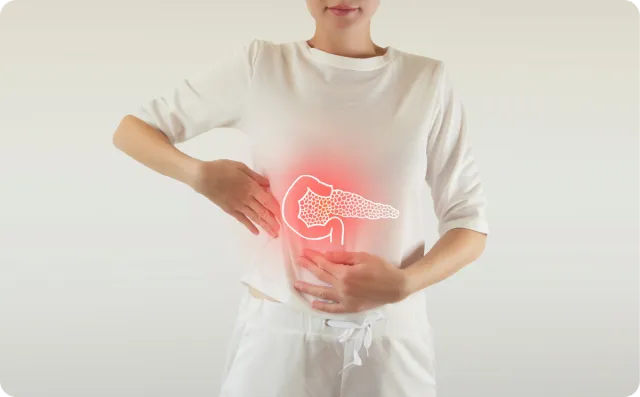
Jump to
Book a visit
$25 typical copay
$100 without insurance
Get constipation relief today from the comfort of your own home.
A virtual constipation treatment consultation makes it easy to talk to a doctor about your symptoms and get a personalized treatment plan, fast and discreetly.
Key takeaways:
- The appearance of bowel movements can give important insights into your digestive health.
- While many variations in stool type are normal, sudden changes or concerning signs may require medical attention.
- Understanding what’s typical for you can help determine when to seek help for possible health issues.
Poop may not be the most comfortable topic, but it’s an essential part of understanding your health. Different types of bowel movements can reveal a lot about your digestive system and overall well-being. In this article, we’ll explore various types of poop, what they may mean, and how to recognize when it’s time to see a doctor.
By understanding what’s normal for you, you can quickly identify any significant changes that might need medical attention.
Main types of poop and their meanings
Here’s a look at common types of bowel movements and what each might indicate about your digestive health.
1. Hard, small lumps
Hard, pebble-like stools can indicate constipation. They’re typically formed when stool spends too long in the intestines, causing water to be reabsorbed and the stool to become dry and compact. This type of poop can result from dehydration, a low-fiber diet, or physical inactivity. Constipation can also lead to other issues, like bloating and abdominal discomfort.
Occasional constipation is normal, but if this stool type persists, it’s wise to consult with a healthcare provider to prevent complications like hemorrhoids, which can develop due to straining. Constipation can also make the digestive system less efficient overall, as stool buildup can slow down the passage of waste and lead to a feeling of incomplete emptying after bathroom visits.
2. Sausage-shaped but lumpy
Stools that appear sausage-shaped but are lumpy can also suggest mild constipation or insufficient hydration. While it’s better formed than hard lumps, it still indicates that stool may be moving slowly through the digestive tract. Adding more water and fiber to your diet can often resolve this issue, helping to make stools softer and easier to pass.
Foods high in fiber—like leafy greens, whole grains, and fruits—can be very effective in promoting smoother digestion. In some cases, incorporating probiotic foods, like yogurt or kefir, can also help balance gut bacteria, which plays a role in stool consistency and regularity.
3. Smooth, soft sausage shape
This type of stool is generally ideal. It’s soft, smooth, and easy to pass, indicating a well-functioning digestive system. This consistency usually results from a balanced diet rich in fiber, adequate hydration, and regular physical activity. It’s often considered a sign of healthy digestion, so there’s usually no need for concern with this type of poop.
Regularly achieving this stool type suggests that your digestive system is absorbing nutrients effectively, supporting your body’s overall health. Maintaining this stool type often means that you’re consuming enough water daily, which is essential for digestion, nutrient transport, and overall body function.
4. Soft blobs with clear edges
Soft, well-defined blobs can indicate slightly faster digestion. While they are easy to pass, they may suggest mild irritation or a high-fiber meal that has moved through your system a little quicker than usual. Occasional soft stools are generally harmless, but if this type becomes persistent, it may be worth discussing with a healthcare provider, especially if you experience other symptoms like cramps, bloating, or gas.
This stool type can also indicate that food isn’t being broken down fully, which may require a closer look at diet or possible enzyme supplements for those who have difficulty digesting certain foods.
5. Mushy consistency with ragged edges
Mushy or fluffy stools that lack shape can be a sign of mild diarrhea, often caused by an upset stomach, stress, or a reaction to certain foods. This stool type moves through the digestive tract relatively quickly, limiting water absorption. Occasional mushy stools are usually nothing to worry about, but staying hydrated is essential to replace lost fluids.
If this type of stool continues for more than a few days, or if you notice other symptoms like nausea, fever, or cramps, it’s best to consult a doctor. Persistent mushy stools may also indicate mild malabsorption issues, where the body isn’t fully processing nutrients from food, potentially leading to fatigue or nutrient deficiencies over time.
6. Watery, no solid pieces
Watery stool with no solid form is a common indicator of diarrhea, typically caused by infections, food intolerances, or even stress. Diarrhea is the body’s way of quickly eliminating irritants, such as bacteria or viruses, from the digestive system. Staying hydrated is critical, as diarrhea can lead to dehydration, especially if it persists for multiple days.
Persistent diarrhea, particularly if it’s accompanied by fever, abdominal pain, or signs of dehydration (like dizziness or dark urine), should be evaluated by a healthcare provider. Chronic diarrhea can also disrupt the gut’s natural flora, potentially requiring a probiotic supplement to restore a healthy balance of gut bacteria once symptoms have improved.
7. Light-colored or pale
Pale or clay-colored stools can suggest a lack of bile, which might be due to liver, gallbladder, or bile duct issues. Bile is essential for giving stool its characteristic brown color, so a pale stool may warrant attention. If you notice pale stools regularly, it’s important to contact a healthcare professional to rule out any issues with liver or gallbladder function.
Other symptoms, like jaundice (yellowing of the skin or eyes) or dark urine, can also indicate liver-related problems. In cases where bile flow is restricted, it may cause significant discomfort after eating fatty foods, as bile is essential for digesting fats properly.
8. Yellow, greasy, foul-smelling
Yellow, greasy stools that have a strong odor may suggest malabsorption, particularly of fats. Conditions like celiac disease or pancreatic insufficiency can cause this type of stool, as the body struggles to absorb nutrients. When food isn’t properly digested, it can pass through the intestines more quickly, leading to fatty stools with a foul smell.
Persistent yellow stools should be evaluated by a healthcare provider, especially if accompanied by weight loss or fatigue. Sometimes, enzyme supplements prescribed by a doctor can help improve digestion in cases where the pancreas isn’t producing enough digestive enzymes.
9. Black, tarry
Black, tarry stools can indicate bleeding in the upper gastrointestinal tract, often from the stomach or esophagus. This type of stool may result from conditions like ulcers or gastritis, where bleeding in the digestive tract darkens the stool as it moves through. However, taking iron supplements or certain medications can also darken stools.
If you notice black, tarry stools and are not taking any supplements or medications, it’s essential to seek immediate medical care, as it could be a sign of gastrointestinal bleeding. Gastrointestinal bleeding may lead to anemia if left untreated, causing fatigue and weakness due to low red blood cell levels.
10. Bright red
Red stool can be alarming and often suggests bleeding in the lower gastrointestinal tract, such as from hemorrhoids, anal fissures, or other inflammatory conditions. Consuming red-colored foods (like beets or red food dye) can also cause red stools, but if red stools persist, especially if accompanied by pain or discomfort, a healthcare provider should assess the underlying cause.
Bright red stool may indicate bleeding closer to the rectum, and seeking medical advice is crucial to understand where the bleeding is coming from. Rectal bleeding can sometimes result in iron loss, so it’s helpful to discuss dietary sources of iron or supplements with a healthcare provider if blood loss is an ongoing issue.
Read our guide on different stool colors for more information.
When to see a doctor about your poop
While bowel movements vary from person to person, there are certain signs that indicate it’s time to seek medical advice. Remember, paying attention to your bowel habits can help you catch any digestive issues early on.
You should see a doctor if:
- Your stool changes color suddenly and remains abnormal for more than a few days.
- You experience ongoing constipation or diarrhea that does not resolve with dietary changes.
- You notice mucus, blood or pus in your stool, which can signal infection, bleeding or inflammation in the intestines.
You should go to the emergency room if:
- Your stool is black and tarry, which can signal upper gastrointestinal bleeding.
- You see a large amount of bright red blood, as this may indicate lower gastrointestinal bleeding.
- You experience severe abdominal pain, dizziness, or other symptoms of dehydration alongside abnormal stool.
Questions to ask your doctor about your poop
If you’re planning to discuss your bowel habits with a healthcare provider, here are some questions to consider:
- What might be causing the change in my stool’s color or texture?
- Are there specific tests you recommend to determine any underlying issues?
- Could my diet be affecting my stool, and are there changes I should make?
- What over-the-counter or prescription medications could help with my symptoms?
Final thoughts
Understanding the different types of bowel movements can give you useful clues about your digestive health. While some changes are normal, others might signal the need for medical advice. Paying attention to what’s typical for you can help you catch any shifts early and stay on top of your well-being. If you notice ongoing or unusual changes, reach out to a healthcare provider for guidance.
General Medicine follows a strict editorial process, including using real experts to write our articles, vetted primary sources, fact-checking, a secondary medical review, and updates as necessary. This article was medically reviewed and fact checked by Dr. Lane Thaut, DO.
Sources
Müllhaupt B. Diarrhoe [Diarrhea]. Praxis (Bern 1994). 2002 Oct 16;91(42):1749-56. German. doi: 10.1024/0369-8394.91.42.1749. PMID: 12426943. https://pubmed.ncbi.nlm.nih.gov/12426943/#:~:text=Abstract,an%20increased%20liquidity%20of%20stools.
Walker TJ. On the Clinical Significance of Colourless or Clay-coloured Stools unaccompanied by Jaundice, and their connection with Disease of the Pancreas; and on the part played by the Pancreas in Eliminating Bile from the Intestines. Med Chir Trans. 1889;72:257-73. doi: 10.1177/095952878907200115. PMID: 20896747; PMCID: PMC2121540.https://pmc.ncbi.nlm.nih.gov/articles/PMC2121540/
Azer SA, Sankararaman S. Steatorrhea. [Updated 2023 May 16]. In: StatPearls [Internet]. Treasure Island (FL): StatPearls Publishing; 2024 Jan-. Available from: https://www.ncbi.nlm.nih.gov/books/NBK541055/.
Wilson ID. Hematemesis, Melena, and Hematochezia. In: Walker HK, Hall WD, Hurst JW, editors. Clinical Methods: The History, Physical, and Laboratory Examinations. 3rd edition. Boston: Butterworths; 1990. Chapter 85. Available from: https://www.ncbi.nlm.nih.gov/books/NBK411/.
Ianiro G, Pecere S, Giorgio V, Gasbarrini A, Cammarota G. Digestive Enzyme Supplementation in Gastrointestinal Diseases. Curr Drug Metab. 2016;17(2):187-93. doi: 10.2174/138920021702160114150137. PMID: 26806042; PMCID: PMC4923703. https://pubmed.ncbi.nlm.nih.gov/26806042/.
Mitelmão FCR, Häckel K, Bergamaschi CC, Gerenutti M, Silva MT, Balcão VM, Vila MMDC. The effect of probiotics on functional constipation in adults: A randomized, double-blind controlled trial. Medicine (Baltimore). 2022 Oct 28;101(43):e31185. doi: 10.1097/MD.0000000000031185. PMID: 36316826; PMCID: PMC9622669. https://pubmed.ncbi.nlm.nih.gov/36316826/
Our editorial standards
At General Medicine, we cut through the clutter to make health care clearer, faster, and easier to navigate. Every article is grounded in evidence-based research and peer-reviewed journals, reviewed by medical professionals, and written in accessible language that helps you make health decisions with confidence. We’re committed to ensuring the quality and trustworthiness of our content and editorial process by providing information that is up-to-date, accurate, and actually useful. For more details on our editorial process, see here.



